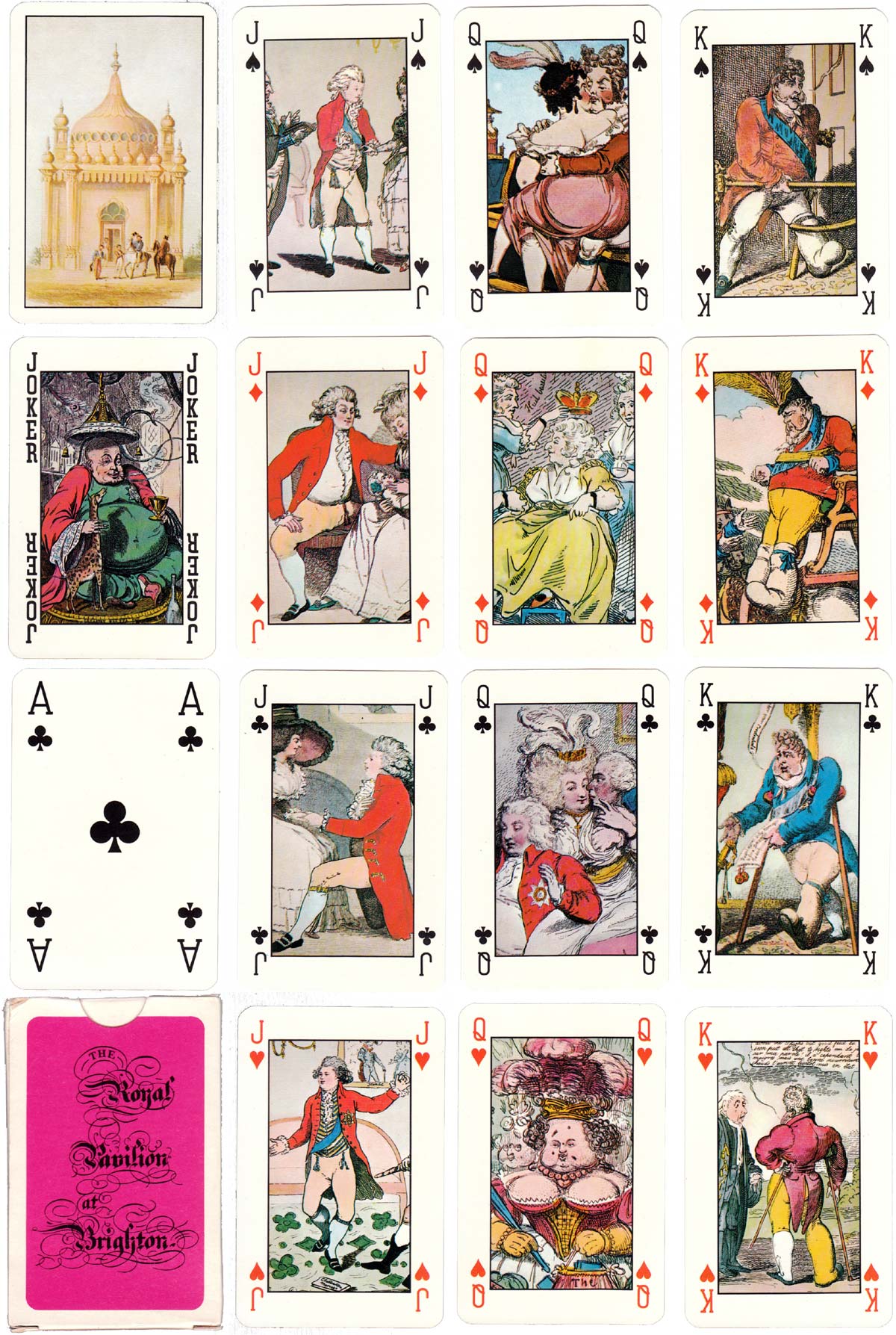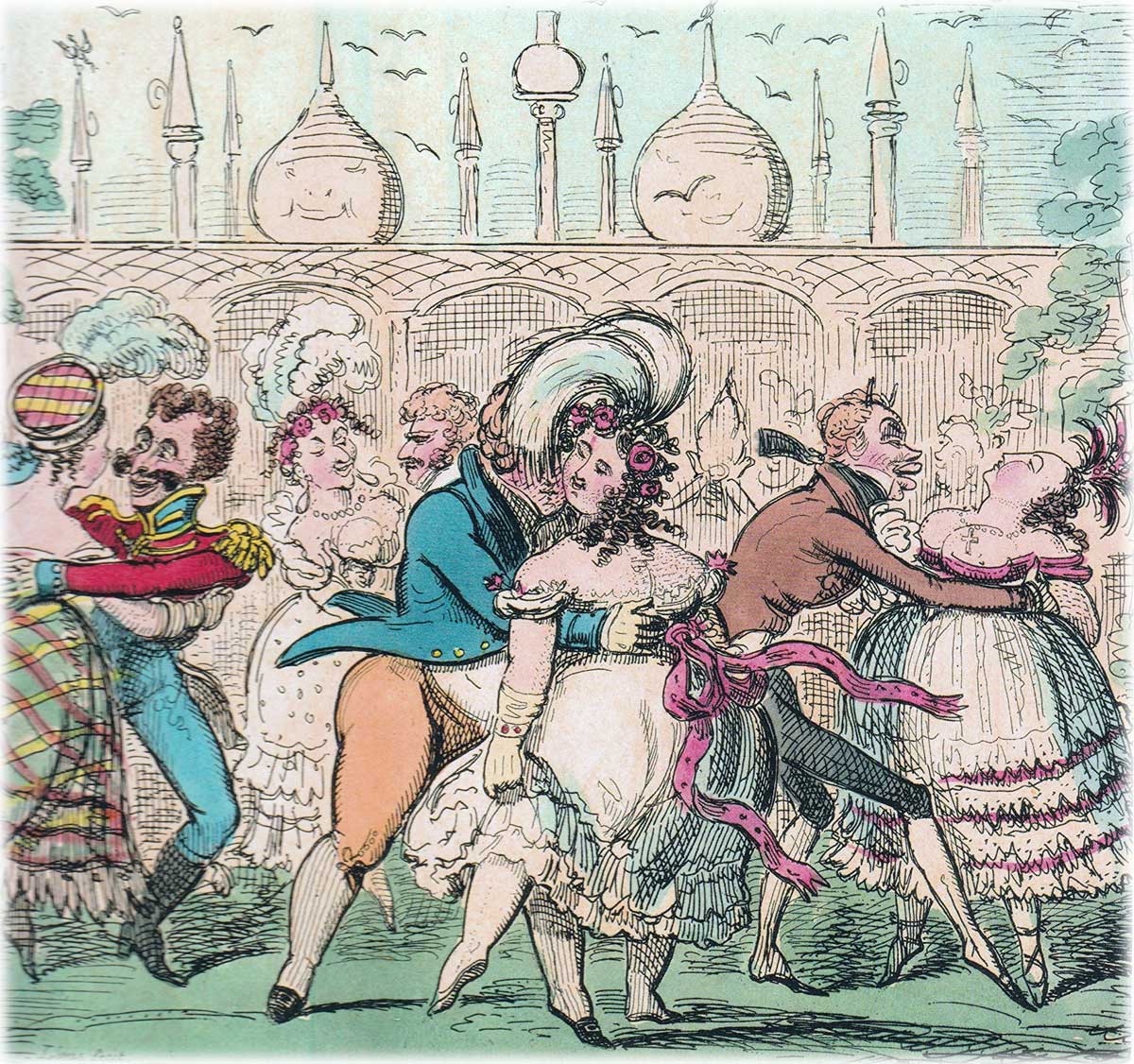Royal Pavilion at Brighton
The Royal Pavilion, also known as the Brighton Pavilion, is an Asian-style palace built for King George IV when he was Prince of Wales.
The “Royal Pavilion at Brighton” playing cards, depicting caricatures of Regency period life, is also known as the “Regency Deck”. The Royal Pavilion is a former royal residence located in Brighton, England. It was built in three stages, beginning in 1787, as a seaside pleasure retreat for George, Prince of Wales (from 1811 Prince Regent), in an opulent Indian style with extravagant chinoiserie interiors.

Above: The Royal Pavilion at Brighton playing cards printed by Carta Mundi in association with the Royal Pavilion, Brighton. 52 cards + 3 jokers + score card in box. Images courtesy Rex Pitts & Matt Probert.
See also Wikipedia: Royal Pavilion►


By Rex Pitts (1940-2021)
Member since January 30, 2009
Rex's main interest was in card games, because, he said, they were cheap and easy to get hold of in his early days of collecting. He is well known for his extensive knowledge of Pepys games and his book is on the bookshelves of many.
His other interest was non-standard playing cards. He also had collections of sheet music, music CDs, models of London buses, London Transport timetables and maps and other objects that intrigued him.
Rex had a chequered career at school. He was expelled twice, on one occasion for smoking! Despite this he trained as a radio engineer and worked for the BBC in the World Service.
Later he moved into sales and worked for a firm that made all kinds of packaging, a job he enjoyed until his retirement. He became an expert on boxes and would always investigate those that held his cards. He could always recognize a box made for Pepys, which were the same as those of Alf Cooke’s Universal Playing Card Company, who printed the card games. This interest changed into an ability to make and mend boxes, which he did with great dexterity. He loved this kind of handicraft work.
His dexterity of hand and eye soon led to his making card games of his own design. He spent hours and hours carefully cutting them out and colouring them by hand.
Related Articles

Never Mind the Belote
Limited edition Belote pack with designs by a collective of 24 street artists.

Sannois dans les étoiles
Celebrities and buildings associated with Sannois, a commune in the suburbs of Paris.

Ben 10 playing cards
Characters from the American animated television science fantasy series Ben 10.

Visite Mexico
Promoting Mexican tourism with 54 different photographs in full colour.

Doctor Who Trump Card Game
Game for two players in which Doctor Who and the Legendary Legion join battle with the Alien Hordes....

Baraja de Juan Martín Zamorano
Deck inspired by El Pendón de los Zamorano, a military pennant dating from 1501, published by Priego...

Disney’s Aladdin playing cards
Characters from the 1992 Disney film Aladdin.

2011 Worshipful Company Pack
Celebrating the bicentenary of the birth of Charles Dickens, with characters adapted from drawings b...

Animal Skat, Česká Grafická Unie
A non-standard deck from Czechoslovakia.

Jim Lyngvild playing cards
Photographs of Danish royalty as imagined by fashion designer Jim Lyngvild.

Jockey Club de Buenos Aires
Spanish-suited pack by Chas Goodall & Son Ltd for the Jockey Club, Buenos Aires.

New interest in old games
Games once fashionable are now eclipsed by quicker gratifications.

Polygo™
Cards of irregular, four-sided shape for playing word and colour games as well as more traditional o...

Treasures from the Bodleian Library
Rare books, manuscripts, music scores, portraits, maps, gospels, chronicles and other valuable artef...

Barok
Dutch pack from the 1950s with colourful Baroque courts, reprinted in 1983.

Victorian grocer’s scale plate
Large flat plate decorated with highly coloured English cards and royal arms.
Most Popular
Our top articles from the past 28 days

